Spring garlic or winter? How to grow them?
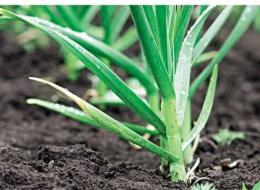
Garlic is a cold-resistant crop that requires moisture and light. Responds well to the application of organic fertilizers. About 30 varieties of garlic, winter and spring, are cultivated, differing in the shape of the cloves, their location, and storage resistance. They are divided into two types: bolting (winter, planted before winter) and non-bolting (spring).
Content:
- Shooting garlic
- Garlic varieties: the very best
- Planting garlic
- Caring for garlic plantings
- Harvesting garlic
Shooting garlic
In addition to the underground bulb, the main commercial component, winter bolting garlic produces seeds that can be used as planting material. The flower arrow begins to form in the middle of the spring growing season. It can reach a meter and a half in height, at its end a dense cover is formed in which flowers and false bulbs, tiny bulbs with a diameter of no more than 5 mm, develop. It is these bulbs that can be taken for further reproduction. When they are planted in the first period, a small single-toothed bulb grows from such a bulb, and then, the next time it is planted, it turns into an ordinary garlic head.
Garlic varieties: the very best
Winter varieties have higher yields, but are less resistant to storage. They are grown for seasonal consumption, including early spring greens, and used in large quantities as an additive to seasonal canned vegetables. For winter storage, spring varieties are used.Under the right storage conditions, they do not dry out or rot, remaining well until next spring. Among the most popular varieties in our climate zone, several stand out.
- Boguslavsky is cold-resistant, has a slightly flattened spherical head with a grayish-purple outer shell. The number of cloves is no more than six with a total bulb weight of up to 45 g.
- Komsomolets is frost-resistant, has a very dense, large head with up to 13 cloves. The color of the husk is mauve.
- Flight - unpretentious to soil and air temperatures, produces a high yield, medium-sized bulb, number of cloves no more than 8.
- Jubilee Gribovsky - gives a good harvest of large bulbs with 10-12 cloves. It is distinguished by increased sharpness. The color of the peel is purple.
- Gafuriysky is a spring variety that has a short growing season and produces very large bulbs with 18-19 cloves. It is distinguished by increased spiciness.
- Ukrainian White is a high-yielding spring variety that produces large, flattened bulbs containing more than 20 cloves. Very good for long-term storage.
Planting garlic
Winter garlic is planted a month before the first frost; the best time is considered to be the second half of September - early October. If planted earlier, it may not have enough moisture; if planted later, frost will prevent strong rooting.
Spring garlic can be planted when the soil is completely thawed and saturated with moisture. For our climate zone - mid-March - early April.
Selected large and healthy specimens are taken for planting. The larger the planting material, the higher the yield. The head is carefully disassembled into cloves without damaging the husk.A day before planting, the cloves can be soaked in a solution of a special complex fertilizer, which, in addition to feeding itself, will remove rot and cleanse from diseases. (The composition can be purchased at a garden center). Planting is carried out in well-loosened soil; before planting, humus is added at the rate of 5 kg/m2 to increase productivity. The distance between the cloves is 10-15 cm, the width of the rows is 25-30 cm. The thickness of the top layer of soil for winter varieties is 4-5 cm, for spring varieties - 2-3 cm is enough. Please note: if you soaked the cloves the day before planting, then their roots have already begun to peck, so you shouldn’t press them too hard into the soil so as not to damage them.
Caring for garlic plantings
Garlic is a fairly moisture-loving plant; during the active growing season, in spring, it requires watering at least once a week. Usually in our climate there is enough natural rain. Fertilizing can be done with organic fertilizers, a solution of chicken manure in water 1:10, at a consumption of 1 liter per ten plants. Can be used every 10 days during bulb growth and formation. You can use fertilizing with inorganic fertilizers twice: at the beginning of growth and after removing the shoots. Composite ones are suitable fertilizers based on ammonium nitrate at the rate of 30g/10l of water per 4-5m2 area for the first irrigation; for the second, you can add 30 g of superphosphate and potassium chloride. You can do it easier by purchasing a ready-made garden mixture and follow the included instructions.
For winter garlic that produces arrows, a mandatory component of care is removing the arrows. If this is not done, the development of the bulb will decrease, both the bulb itself and the cloves will be smaller, which can lead to a reduction in yield by 30-40%.
If you plan to use bulbs for planting, then it is enough to leave them on a few selected specimens. Don't ignore them. As soon as the outer shell of the seed head opens, try to carefully thin out the inflorescences with tweezers, removing the smallest bulbs. To prevent the bulblets from the inflorescence from falling off spontaneously, they are covered with spacious gauze bags. We remind you that normal heads of garlic from such bulbs can only be obtained after one season.
Harvesting garlic
It is very important not to let it stop garlic in the garden. This can lead to damage to the top shell and delamination of the head. Cleaning is done as soon as the upper leaves begin to turn yellow. Plants are dug up; the most suitable tool for this is a garden fork. Leave to dry in a shaded place for 5-7 days and cut off the stems, leaving a stalk of about 5 cm. Store the garlic in a dry, well-ventilated area.

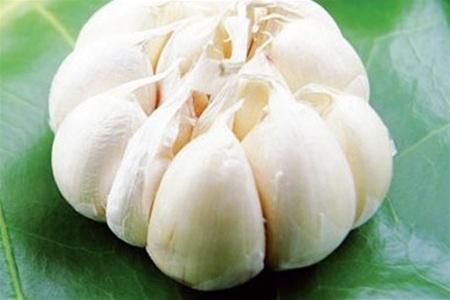
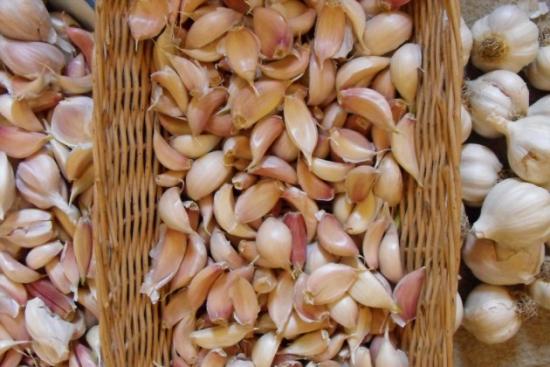

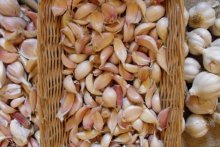

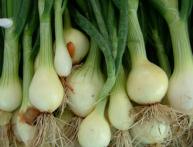
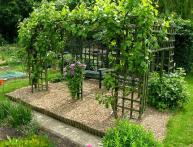

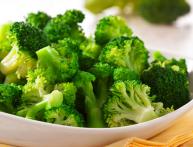

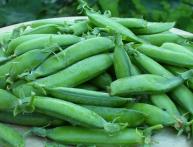
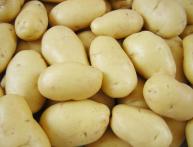
Comments
I like winter garlic better. It is stronger, the fruit is larger and comes off much earlier. But even the ardent one has its advantages. For example, it has more teeth.
I completely agree with the comment above; winter garlic not only sprouts earlier, but is also absorbed perfectly in the soil. In addition, I heard that the spring one is not so healthy, although it is more pungent. But it rather depends on the variety.
It turns out that we always grow exclusively winter garlic, which is harvested from the beds by the end of July. Excellent garlic grows. We have never encountered a spring one.
Winter garlic usually grows stronger than spring garlic. So I’ve been planting winter crops for years now and I really like them.
I have never met gardeners who plant spring garlic. Everything is just before winter, and so are we. We have been planting for many years, but every year we encounter a problem - the leaves turn yellow. Sometimes less, sometimes stronger. Nothing helps. But garlic grows, although it is not very large and does not store well, but from one garden bed we have enough for the winter.